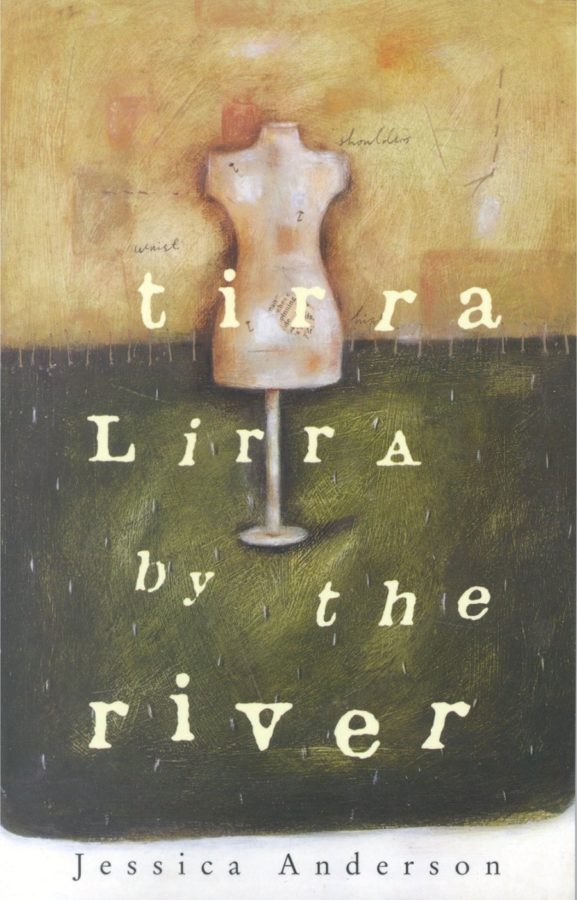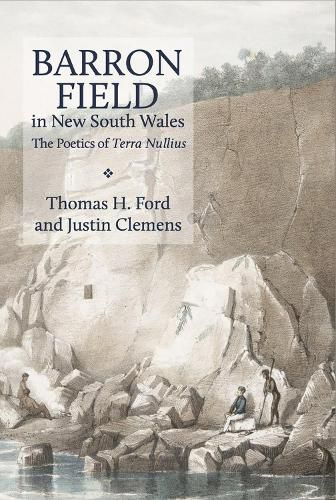Jessica Anderson’s Tirra Lirra by the River is one of the few Australian novels of the 1970s that has remained in print since its first release. By contrast, to take just one example, four-time Miles Franklin winner Thea Astley’s books have been out of print a few times – this remains the case for The Acolyte, which won the Miles Franklin in 1972. Perhaps in part because of its easily digestible length, Tirra Lirra is a staple of high school and university curricula. Tirra Lirra tells the story of Nora Porteus’ return to her family home in Brisbane after decades overseas. As she is ill and is nearing the end of her life, Nora’s mind turns to her past, her ex-husband, friends, and the interplay of art and labour.
The novel began its life as a short story that won third place in the Captain Cook competition before Anderson converted it into a radio play that aired on the ABC and finally a short novel published by Macmillan in 1978. Anderson’s daughter, screen-writer Laura Jones, was writing a film script at one point but the film was never made. This potted history features in Susan Sheridan’s Nine Lives (2011), which is one of the few critical responses to consider the book’s development. While, by the standards of Australian literary studies, there has been some work on this title, little attention has been paid to the circumstances of its initial publication.
Jessica Anderson, like some of her female contemporaries Olga Masters and Elizabeth Jolley, came to writing fiction a little later in life. Her first novel was published when she was 47 and had a domestic situation that afforded her time to write. Her early books were published in the UK first (An Ordinary Lunacy, The Impersonators, The Commandant) whereas Tirra Lirra appeared on Australian shelves before being published in foreign markets.
My interest in Tirra Lirra and its editing history is part of a research project considering the role of editors in the seventies and eighties, a time when women started to predominate in these roles and women’s writing enjoyed success both in finding publishers and readers, and in literary prizes. I have worked for a dozen years in publishing and I often hear that standards have deteriorated. I want to find out about editorial processes in the recent past. An associated result of my work is showing that correspondence, holographs, and typescripts can fill gaps in literary criticism and can inform it.
One of my findings is that criticisms of editors are not new. Contemporary reviewer Jean Bedford was scathing about Tirra Lirra, writing: ‘It is a pity that the amateurish beginning wasn’t edited to the standard of the rest – it would have been a much better book’. In fact, Anderson experienced relatively little editorial input, the opening section was reworked as much as if not more than the sections that followed, and the greatest influence on the book came from someone who was not even her editor.
Anderson’s papers reveal the potential significance of editorial feedback but also the ways in which such work can be a greater hindrance than help. My work emphasises the roles of collaborators in the development of manuscripts and shows that some of our most beloved works are not the product of a solitary writer in a garret but of their interactions with the creative and commercial forces that surround the book’s publication.
The London Section
Elaine Barry, one of Jessica Anderson’s closest readers, conjectures of Tirra Lirra that ‘[p]erhaps because of its long gestation, it is the shortest, most compressed of all her novels’. However the archive doesn’t bear this out. Instead of the ‘long gestation’ involving cuts, Anderson’s response to feedback meant that she added a dozen or so pages to the book.
The question of how it came to be expanded and in what way is answered by a cover letter that Anderson wrote to accompany material she gave to the Mitchell Library dated ‘May 95’. Anderson documents that:
I sent it to Alan Maclean who was a good editor, hoping that he would suggest a way of expanding it rather than asking him to publish it; and he did in fact define the weakness of the U.K. part. I was able to expand this part after a visit to London in 1973.
The page which follows is the original letter from Maclean dated 2 June, 1971, in which he says:
As far as length goes it is as you know very awkward in form I believe it is really more a long short story than a short novel, but I don’t think that it is satisfactory either way. Looked at as a novel there is a great deal left to the imagination and the whole of the UK experience is only lightly, though marvellously sketched in. Looked at as a very long story the converse it is true and there is too much for the reader to absorb. Your writing has real distinction, insight and clarity and it is just that the shape and structure seems to me to be all wrong.
This is a poor sort of letter which will I am afraid only serve to irritate you. However it is one of these maddening times when I can think of nothing really constructive to say, at the same time finding only praise for the actual writing.
Maclean’s comment about how he cannot think of anything particularly ‘constructive’ to add is typical of a self-effacing approach to editorial work. Perhaps he felt the need to further soften his letter since it was, in effect, a rejection. In fact, it would seem that rather than ‘irritating’ Anderson, she found in his suggestion a path to pursue for an otherwise unpublishable work. Maclean made an important contribution in that Anderson adopted his suggestion of where to develop the text.
From a commercial perspective, it seems likely that Maclean’s suggestion would have had an element of self-interest since it is a publishing truism that books sell better in markets which feature in the books themselves – or in other words, if the book includes more scenes set in England, then it has a greater chance of appealing to English audiences.
Although Maclean had been the publisher of Anderson’s first book, An Ordinary Lunacy, at Macmillan UK in 1963, he had handed on her next book to his colleague who was starting a crime list and so had not been her publisher for some years.
The greatest editorial interventions are not always from the person who is professionally engaged as the book’s editor. In Anderson’s case it was not a spouse or a close friend but someone whose opinion she trusted and who had been her editor in the past. However as in the case of a friend or a spouse, Maclean’s editorial work was provided gratis. For any critique about the commercialism of the publishing process and denigration of the work of major corporations, Maclean’s contribution was in the spirit of literary cooperation and while it may have been in his interests to maintain a good relationship with an author whose future work could be profitable, in this instance the time spent reading and the useful criticism he offered were not directly tied to commercial gain for his employer.
Though slight, Maclean’s comment encouraged Anderson to develop elements of the story that might otherwise have laid dormant. In her review, Jean Bedford marks the opening section of Tirra Lirra as that which needed editorial attention and argues that the book would have been better had the standard of editing been equivalent over the entire work. She could not have known that in fact, the middle section was the ‘youngest’ of the book and that no editor had intervened in the middle or the end of the book at a line level – let alone in terms of developing structure or tone, aside from the one prompt from Alan Maclean.
Titular questions
Tirra Lirra was the first of Anderson’s books published in Australia before being released overseas. While there may have been some benefits to having a local publisher, good communication was not one of them.
A title is one of the first elements of a book with which a prospective buyer has contact and so it is often a topic of discussion between publishers and authors over the course of the acquisition and editorial process. In what must have been an unnerving development for Anderson, she received the contract from Macmillan for her new book, which had been renamed as The Crystal Mirror without consulting her. As Anderson wrote in response to the contract:
I have never heard of THE CRYSTAL MIRROR. The title of the ms. I sent you is TIRRA LIRRA BY THE RIVER. Has someone changed it for me? Or have you got it mixed up with another novel?
And again in later correspondence, her editor at Macmillan, Pamela Reid wrote ‘Thank you for your recent letter returning the signed contract for THE CRYSTAL MIRROR.’ Perhaps the strategy at Macmillan was simply to act as if Anderson had accepted the title change until it was too late.
Anderson was determined to keep her original title and offered the opinions of others as ballast for her argument:
a number of people said they turned it on because their curiosity was aroused by the title, and when, in its first genesis as a short story, it won a prize in the Capt. Cook centenary comp., the judges all liked the title.
In this defence of her original title, Anderson only refers to the comments others made in its praise – both commercial and literary judgements – rather than offering her own explanation for its importance; a reticence which fits with her general avoidance of spelling out the subtleties of her work more generally. Her repeated arguments to keep it, however, reinforce how strongly she felt about the need to stick with the original.
The proposed title, The Crystal Mirror, came from Tennyson’s poem only a few lines before ‘Tirra Lirra by the River’, in a stanza that Anderson quotes in the book and while it would have made for a thematically consistent title it would have highlighted different concerns. Instead, Anderson’s quite unusual title can be read as a comment on the role of the female artist, as Roslyn Haynes has argued:
Jessica Anderson’s title is, at first sight, uninviting. Even the most ardent Tennyson reader must have secretly felt that Sir Lancelot could have found something more profound or meaningful to sing than ‘Tirra lirra’, and to single this line for a title seems only to emphasize its deficiencies. However, the title in fact points to the tone of the most important themes of the novel … namely the author’s assertion of her criteria of art.
Haynes characterises Anderson’s concept of art as ‘ceremony which distances, makes bearable and transforms into art this experience in life which would otherwise be intolerable.’ Since Nora is disempowered by her husband, by her financial situation and by her position in society more broadly, art in this way is a feminist practice – a reclamation of agency. By focussing on Sir Lancelot’s failings and his limp, self-absorbed responses to the Lady of Shallott, the title foreshadows the repeated disappointments that the men in Nora’s life inflict on her.
Cancelled
The title was not the only change that Anderson had to ‘reject firmly’, to borrow Sheridan’s words. On receipt of the edit from Pamela Reid at Macmillan, Anderson wrote back to request that all of the editorial suggestions be countermanded. In my time in publishing, I’ve never had an author summarily reject an edit in its entirety. Further, most contemporary contracts include a clause that the author will undertake ‘reasonable’ edits and it would be possible that such a break would be sufficient to terminate a contract. While, for the most part, the edits were technically correct, the editor was asking for a complete flattening of some of Anderson’s literary techniques that she had been developing over her previous books and went on to deploy in later novels such as The Impersonators and in her short stories. Anderson regularly plays with time by running on scenes within individual paragraphs thereby uniting ideas and sensibilities rather than simply structuring information on a chronological basis.
There are two kinds of editing that Reid undertook – one at the level of suggested structural changes and the other at the level of a copyedit. Overwhelmingly the changes are for things like going from double to single quote marks – an Australian convention – changes that could be called uncontroversial and related to house style. However, for almost every other change, which included adding many section breaks and numbering the chapters, Anderson wanted to keep the original and rather than simply writing back to reject the changes summarily, there is a draft of her letter, dated 26 August 1977 where she lists each of the edits that she wants retracted and, in many cases, the reason why.
In another letter dated 13 September, Anderson reiterated her concerns
On the first of September I wrote to you asking that the alterations made by an editor on the ms. of TIRRA LIRRA BY THE RIVER should be cancelled before it goes to press, I enclosed three foolscap pages of explanations of each cancellation I asked for, as well as explaining the changes and corrections I made myself…
There is also the title to be decided on. I really can’t go past my own title; it is so much better than any other I have thought of. Have you a publication date yet for the book?
Rather than saying she wanted the original reinstated or some other phrasing, Anderson’s use of the term ‘cancelled’ is interesting here. This is a definitive position and not something to be negotiated. In her notes, she rejected the edits for inaccuracies, anachronisms and, in some cases, introduced errors. Anderson also wrote that her choices in the novel had been made advisedly and so she wanted the text as she submitted it for publication. Further, she appeals to the editor’s sense of frugality by later referring to the expense of changing typeset pages. Lastly, her mention both of the title and her ignorance of the publication date show how disempowered and disconnected the author may feel from the publishing process.
The language that Anderson uses in her letter – a second letter on the subject since the first went unanswered – is assertive and determined. On the whole, the copyeditor was very restrained in her approach to Tirra Lirra and their intervention would be equivalent to the work of many contemporary proofreaders. The editor suggested very little in the way of significant changes – be they at the level of paragraph or sentence – and the changes that she did suggest are, on the whole, easily justified according to editorial convention. However, had Anderson allowed for the introduction of more section breaks and numbered chapters, her trademark chronological fluidity would have been interrupted, again and again.
The archive shows that Anderson enjoyed both very limited editorial intervention and suffered from the over-reach of her publisher. In each case the manuscripts and letters reveal comments made by reviewers and critics emphasising the significance of Anderson’s archival record. The archives speak loudly about the power of editing and publishing practices both as a spark and a wet blanket. Returning to these records helps generate a clearer understanding both of how the industry has worked in the recent past and how we have arrived at the current status quo.
Works Cited
Anderson, Jessica, Papers 1963–1990, MLMSS 3773.
— Tirra Lirra by the River, Macmillan, 1978.
Barry, Elaine, Fabricating the Self, UQP, 1996.
Haynes, Roslyn, ‘Art as Reflection in Jessica Anderson’s Tirra Lirra by the River’, Australian Literary Studies, Volume 12, Issue 3, May 1986.
Sheridan, Susan, Nine Lives, UQP, 2011.







